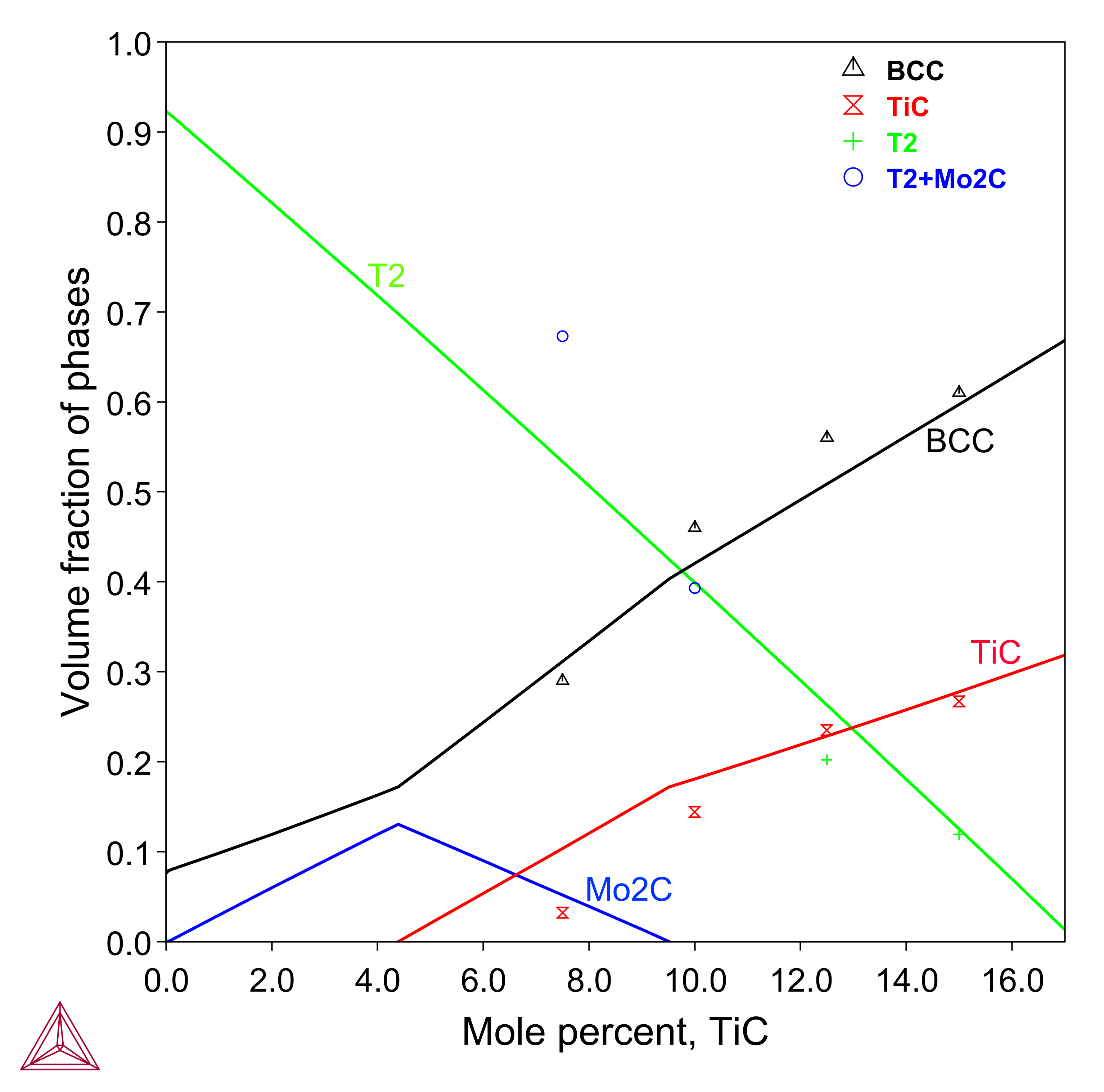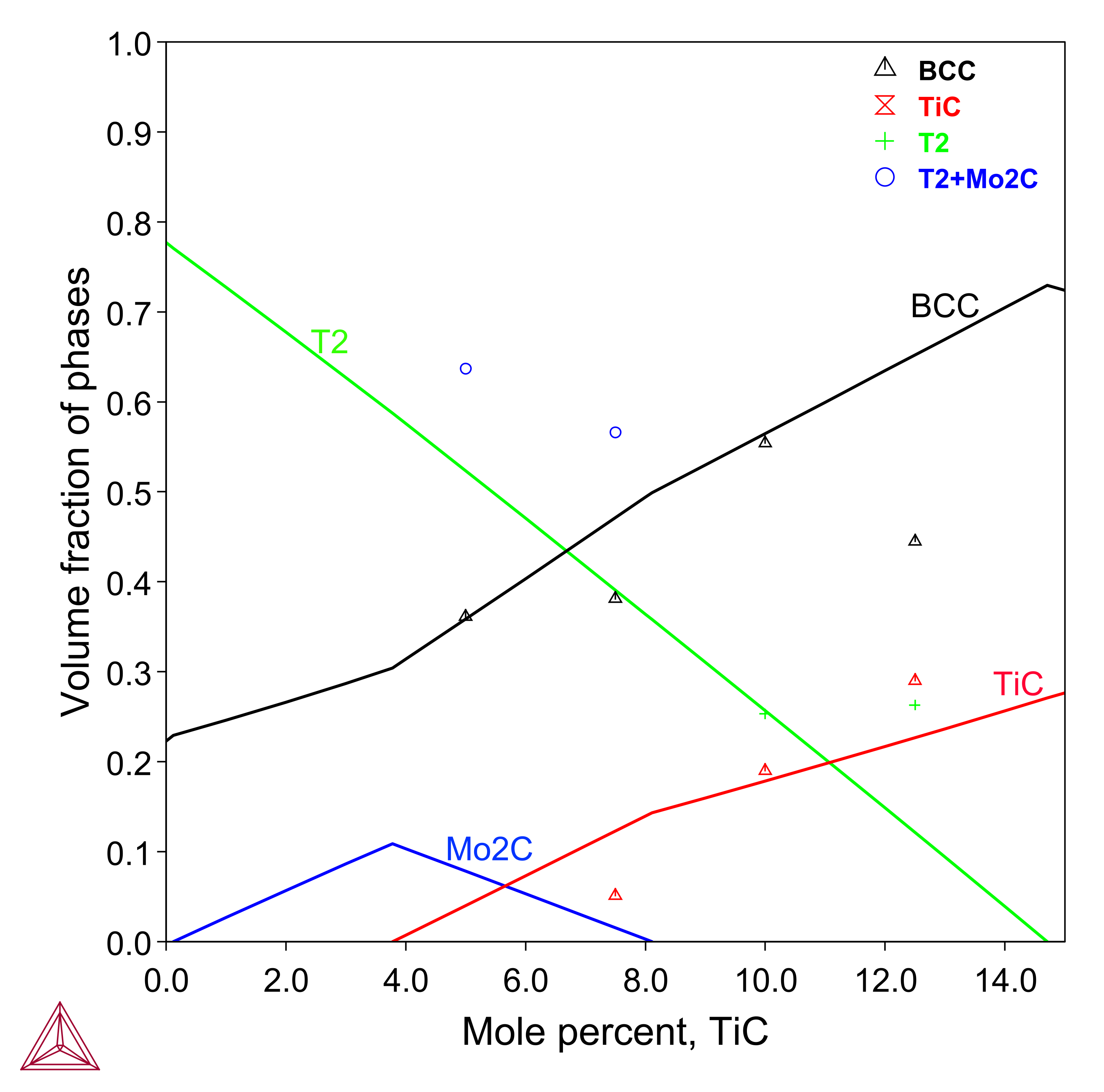Phase Fraction of TiC-added Mo-Si-B Alloys
The TCS Mo-based Alloys Database (TCMO) database can be used to study the phase fraction of TiC-added Mo-Si-B alloys.
Due to its high melting point and low density, TiC can act as an excellent strengthening phase in Mo-Si-B alloys. Moreover, the primary TiC phase contributes to a continuous BCC matrix and thus improves the fracture toughness.
Figure 1 shows that in the Mo-Si-B-TiC series alloys where x(Mo)=0.65 and x(Si):x(B)=0.5, the increase of the TiC content increases the volume fractions of BCC and TiC, while decreasing those of T2 and Mo2C. Such a trend was confirmed by experiments from [2014Miy].
A similar trend is predicted for the Mo-Si-B-TiC series alloys where x(Mo)=0.7 and x(Si):x(B)=0.5 (as shown in Figure 2). Deviations between the calculated and experimental volume fractions of phases exist for the TiC content of 7.5 and 12.5 at.%, which may come from the weak contrast difference between different phases or the insufficient annealing time to reach complete equilibrium.
Figure 1: Calculated volume fraction of phases for the Mo-Si-B-TiC series alloys where x(Mo)=0.65, x(Si):x(B)=0.5 at 1800 °C. Experimental data are from [2014Miy].
Figure 2: Calculated volume fraction of phases for the Mo-Si-B-TiC series alloys where x(Mo)=0.7, x(Si):x(B)=0.5 at 1800 °C. Experimental data are from [2013Miy].
Reference
[2014Miy] S. Miyamoto, K. Yoshimi, S.-H. Ha, T. Kaneko, J. Nakamura, T. Sato, K. Maruyama, R. Tu, T. Goto, Phase Equilibria, Microstructure, and High-Temperature Strength of TiC-Added Mo-Si-B Alloys. Metall. Mater. Trans. A. 45, 1112–1123 (2014).

